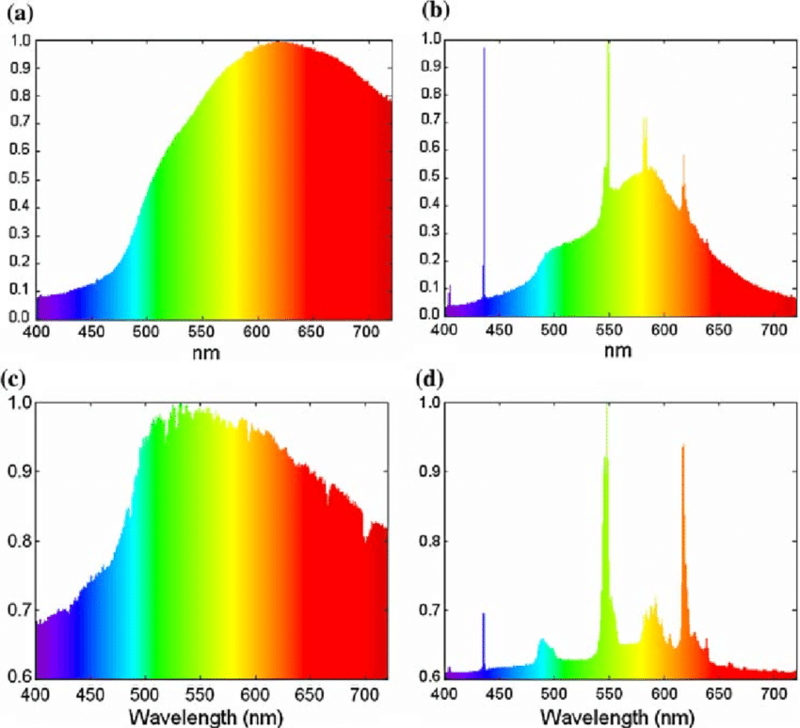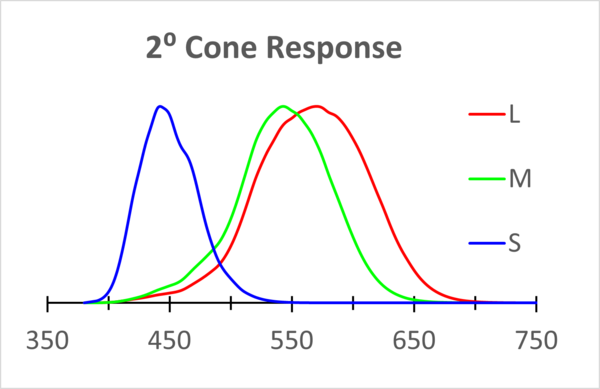Display Metrology: The Science of Quality Measurement
Metrology is “the science of measurement, embracing both experimental and theoretical determinations at any level of uncertainty in any field of science and technology,” as defined by the International Bureau of Weights and Measures (Bureau International des Poids et Mesures, BIPM).
Display metrology means using a scientific approach to measure (quantify) the visual output of a display. The primary output of today’s digital displays is light, which can be measured in terms of a display’s brightness, color, contrast, and other visual qualities.

Display screens illuminate modern life.
Spectral Power Distribution vs. Spectral Sensitivity
There is more than one approach to quantifying and characterizing a light source, however. We can measure the absolute values of a light’s electromagnetic output, called its Spectral Power Distribution (SPD). The SPD of a light source is typically displayed as a graph that represents the relative intensity of the source at each wavelength.

Normalized spectral power distributions of (a) halogen light, (b) fluorescent light, (c) daylight, and (d) another type of fluorescent light. (Image Source)
The human eye, however, does not perceive every single wavelength—nor the raw power of light emitted at every wavelength—in the electromagnetic spectrum. Thus, we do not perceive the entire SPD of many light sources. In our eyes there are three types of cones (S, M, and L) that are each sensitive to a range of wavelengths. The image below is a rough illustration of the normalized response of each of our eye’s cones—that is, how powerful we perceive each wavelength to be.

The spectral sensitivity of each cone in the human eye.
The cones in our eyes can't detect individual wavelengths. They see the sum of the total light that all three of them are sensitive to, which is defined by the area under each of the curves in the graph. Understanding this human visual response—or our spectral sensitivity—helps us plot how we perceive various SPDs.
Measuring Displays as Perceived by Humans
Display devices are designed to be used by humans, so measurement and characterization of display performance (in terms of light and color output) uses human spectral sensitivity as the yardstick. Matching the human visual response is important for multiple reasons:
- Human visual perception ultimately determines our experience of light, including the accuracy and appearance of colors in devices like light sources or displays.
- It makes sense then that the objective in testing displays is to measure light and color the same way a human perceives it to ensure the visual quality of a display matches human experience.
- Only by obtaining values standardized against human perception can we perform automated display metrology with meaningful results.
To evaluate displays, we need to understand two fundamental aspects of light: the light output produced by the display (the SPD), and the light input we receive via our human visual system.
Photometry is the branch of metrology that measures intensity of emitted light (luminance) as perceived by humans. Likewise, colorimetry measures the color (chromaticity) of light as seen by the human eye. Thus, there are certain types of display measurement that depend on photometric and colorimetric instruments.
Key Quality & Performance Characteristics of Displays
Today’s display manufacturers perform a wide range of measurements, tests, and inspections of display devices to ensure that quality and performance meet brand standards and customer expectations. With complex global supply chains, the industry relies on consistent, objective evaluation of displays and components at all steps of manufacturing process.
Some of the key characteristics for display evaluation include:
- Luminance and Chromaticity
- Color Gamut Area
- Color Volume
- Gamma
- Uniformity
- Mura & Defects
- Directional View
- Reflection
- Flicker and other time-domain characteristics
Display Metrology Instruments
To measure all these characteristics, both in the R&D lab and on the production line, display makers rely on a variety of different metrology instruments such as spot meters, spectroradiometers, photometers, and colorimeters:
| Instrument Type | Typical display characteristic to be measured |
|---|---|
| Spot Meter | Color, luminance, contrast, gamut, gamma, flicker... |
| Imaging System (Photometric or Colorimetric) | Color, luminance, contrast, uniformity, mura, defects, pixel-level analysis, distortion… |
| Spectroradiometer | Spectral data... |
| Others | Response time, view-angle-dependent performance... |
Radiant’s ProMetric® Y-Series Imaging Photometers and ProMetric I-Series Imaging Colorimeters fit in the “imaging system” category. Imaging systems excel at measuring display devices, in particular measuring display appearance as it’s perceived by human viewers. An image-based measurement system uses a 2D detector to measure multiple points of light simultaneously. This simulates the human visual experience, capturing the entire display at once, just as our eyes take in an entire scene in one glance.
By capturing a complete image of a display at once, an imaging system can evaluate and compare millions of points of data simultaneously. This capability enables:
- Contextual evaluation: uniformity, gradient, contrast, mura, distortion
- Location, identification, and severity of defects (pixels, lines, blobs)
- Simultaneous measurement of multiple regions of interest (LED arrays, pixels, subpixels)
- Determining dimensions, distortion, and focus quality (projection displays)
- Performing advanced analyses with multiple analyses possible per image captured
Deeper Learning: Fundamentals of Display Metrology
This blog post has just scratched the surface of display quality measurement. To learn more, listen to some of the experts in the field in the Short Course “Fundamentals of Display Metrology,” originally presented as part of the 2021 Display Week virtual event program and now available as an on-demand webinar.
Presented by Jens Jensen, Vice President of Product Development at Radiant Vision Systems; Dr. Reto Häring, Vice President Customer Solutions at Instrument Systems GmbH; and Yutaka Maeda, Business Development Lead at Konica Minolta, the course covers these topics in a little under 4 hours:
- Science of light and color and quantifying human visual response (e.g., SPD, CIE standard functions)
- Units of measurement (e.g., luminance, color gamut), measurement standards (e.g., IEC, ISO), and metrology systems from spot meters to imaging equipment
- Test methods to address display performance parameters such as mura, pixel uniformity, and flicker
- The latest metrology solutions for testing emerging displays such as microLED and AR/VR devices, and more.

Join Mailing List
Stay up to date on our latest products, blog content, and events.
Join our Mailing List
